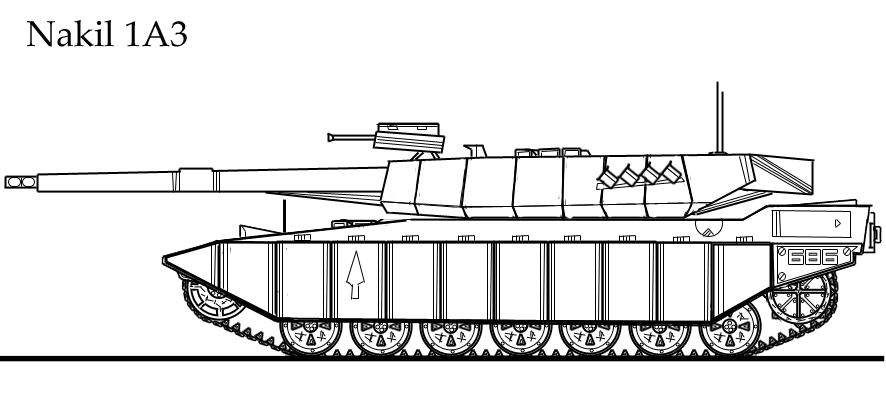
The origins of the Ingerier can be traced back to a Southeast Asian request to Kriegzimmer, which found much popularity within the ranks of the Kriermada. Although the Ingerier had been designed with Southeast Asian interest in mind, the battlecruiser would also become the mainstay battlecruiser of the Kriermada, although it wouldn't become the only one. The Ingerier also spearheaded a spur of research and design within Kriegzimmer for the Kriermada for newer and more ships, replacing several of the older designs which had accompanied the Kriermada since the days of the Great Civil War. That said, the Ingerier would become the first of three battlecruiser designs in Kriegzimmer, which would later continue on to two battleship projects, one dreadnought project, and finally, at least within regards to big guns, a new galleon, the Ferraet class. The first Ingerier class Battlecruisers would serve by 2019 in the Kriermada, although the first ship served in the Southeast Asian navy by late 2018.
There had been many historical stimulations which had finally persuaded the Kriermada to aid Kriegzimmer in the funding of the project, and most of these were directly involved with the War of the Golden Throne. The first of these was the Battle of Targul Frumos, a naval battle off the coast of the city, which pitted up to four Havenite [SafeHaven2] fleets against two Macabee battlegroups, and a host of Killian aircraft based off the city. Although the battle hadn't ended during the beginnings of the project for the Ingerier, it had already illustrated several important factors to the Empire. During Targul Frumos there had been a massive revolution in Macabee naval tactical doctrine, which ultimately aided to bottle up the Havenic fleets in the Bay of Madrasa. This new tactical naval doctrine pinpointed the necessity for fast, yet heavy, naval designs which ultimately translated in the need for a battlecruiser, which could close range and engage an enemy warship with some sort of semblence of rush. Although in the end, Battlegroup Romeo was able to fully bottle up three Havenic fleets in Madrasa, through the use of speed, and the command abilities of the most legendary Macabee naval commander Grand Admiral von Laifsraggen, there was an evident lack of ships that could bring guns heavy enough, fast enough, to provide firepower on the rear of the Havenite armada.
The need for speed was further warranted with the example of the Battle of the Liernat Straits, which saw the Gerfaanlichi juggernaut Republiek Sukep Halmilcar pitted against the Izistani battleship Izistan. Although the battle ended indicisive, it had shown that a lack of velocity could mean the loss of a battle, as the ownership of the Straits had failed to change hands, and it would take Macabee interference to finally rid the Straits from Gerfaanlich's presence. Although the Halmilcar escaped the battle with most of her turrets damaged, and her superstructure failing, the Izistan left with much more damage, drilled through her by the rediculously massive guns of the Halmilcar. It was the lack of speed early in the battle, however, that had forces the Izistan to face the massive guns of the Halmilcar at point blank range, and it was the early suprise which allowed the Halmilcar to put so much lead into her starboard side.
It was the latter Macabee operation to cleanse the Liernat Straits, which would assure Macabee naval supremacy over Gerfaanlich in the colonies, after the Macabee Labarnas had been sunk by the Super Dreadnought Mithradates in the region of Haven. However, again, there was a lack of fast ships with the necessary force to hunt and destroy Gerfaanlichi shipping which ultimately prolonged the operation, and allowed Izistan such a headstart in the ground operations which would mark the demise of Gerfaanlich as a colonial power, although she was still able to ensure her independence from the Golden Throne, despite her multiple defeats during the War of the Golden Succession. Regardless, the issues encountered early on in this specific theater of the War of Golden Succession provided the final prodding necessary for the design and implimentation of a battlecruiser, which would ultimately manifest itself with the commission of the HES Ingerier in 1919, which was follewed soon thereafter by another six of the class.
The Ingerier found its name in history, as the first ship of the class was honored to Grand Admiral Ramos Ingerier who commanded the imperial fleet at the Battle of Xierniot, in 1734, witnessing the imperial victory over the Kingdom of Arras, opening for the invasion of the island some time later. The Ingerier is the first ship to be named after an Imperial admiral, either from the First Empire or the Second Empire.
Statistics:
Length: 266.8m
Beam: 33.35m
Draught: 9.52m
Displacement: 42,446.3 tonnes [46,789 short tons]
Hull Type: Monohull
Machinery:
2x Helga pebblebed nuclear reactors [352,000 shp]
4x Waterjets
Maximum Speed: 43 knots
Range: Limited by consumables.
Armour:
381mm belt
406.4mm turret plate
93.98mm deck
Armament:
3x 355.6mm triplemount lightweight high breech pressure turrets
8x Conhort CIWS
6x 88mm AAA
4x Praetorian Batteries
2x Hedgehog Mk. II Mortars
4x 5 cell quadruple rotationary VLS
Electronics:
Vertically deployed TB-2016
TB-163 thin line array
TB-87 short line array
MRT-1 multifunction search radar
MRT-4 surface search radar
KRS-82 fire and control radar
KRS-11 navigation radar
KRS-13 multifunction search radar
MLT-1 lidar array
BST-7 multiple interfece ladar arrays [four total]
KIR-66 infra-red fire array
Aircraft:
1x LAMPS
2x UAV
Crew: 536 naval
Cost: 5.7 billion























